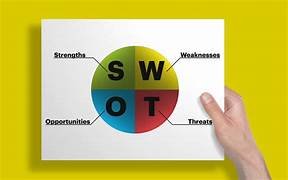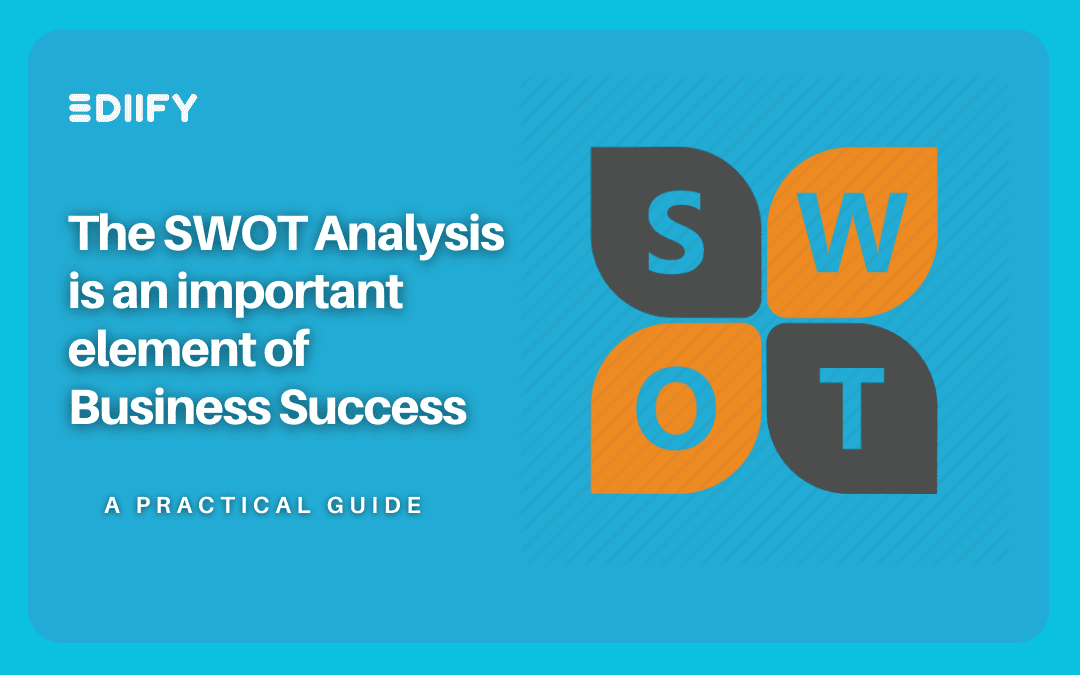Introduction:
In the dynamic business landscape, maintaining a competitive edge necessitates a strategic approach that transcends mere intuition. Companies must possess a thorough understanding of their internal dynamics, encompassing strengths and weaknesses, while also navigating the external terrain filled with opportunities and threats. This is where the SWOT analysis proves invaluable. SWOT, an acronym for Strengths, Weaknesses, Opportunities, and Threats, serves as a potent tool, offering a comprehensive perspective on a business’s present status and future potential.

Strengths:
Initiating with an evaluation of a company’s internal strengths, SWOT analysis identifies attributes and capabilities that contribute to its competitive advantage. These strengths may manifest in a robust brand reputation, innovative products or services, a skilled workforce, or streamlined operational processes. Recognizing and leveraging these strengths empowers companies to capitalize on their core competencies, establishing a robust foundation for success.
Take a view at the below blog The Benefits of swot analysis
https://ediify.com/the-benefits-of-swot-analysis-for-your-business/
Weaknesses:
Acknowledging weaknesses is the initial step towards improvement, as no business is immune to internal vulnerabilities. SWOT analysis facilitates the identification of weak points such as outdated technology, inefficient management practices, or financial constraints. Confronting these weaknesses head-on enables organizations to develop strategies to mitigate risks and enhance overall performance.
Opportunities:
External factors often present diverse growth opportunities. SWOT analysis dives into the external environment, unveiling potential avenues for business advancement. These opportunities may range from tapping into emerging markets and leveraging technological advancements to adapting to changes in consumer behavior or fostering partnerships with industry peers. Identifying and seizing these opportunities can be transformative for companies seeking to broaden their horizons.
Threats:
The ever-evolving business landscape is rife with threats, ranging from intense competition to economic downturns, regulatory shifts, and unforeseen challenges. Companies must be prepared to navigate adversity, and SWOT analysis proves instrumental in anticipating potential threats. This proactive approach enables businesses to develop contingency plans and fortify their defenses against external risks.
Take a look at the below blog to explore the features of strategy
https://ediify.com/explore-the-features-of-strategy-a-comprehensive-guide/
Conclusion:
In conclusion, SWOT analysis stands as a foundational element of strategic planning, empowering businesses to make informed decisions. Through a comprehensive examination of internal strengths and weaknesses alongside external opportunities and threats, companies can chart a course for sustainable growth and success. Disregarding the importance of SWOT analysis exposes a business to unforeseen challenges and missed opportunities. Embracing this tool allows organizations to stay agile, adapt to changing circumstances, and construct a resilient foundation for long-term prosperity in the fiercely competitive business landscape.

For more information visit the mentioned website


